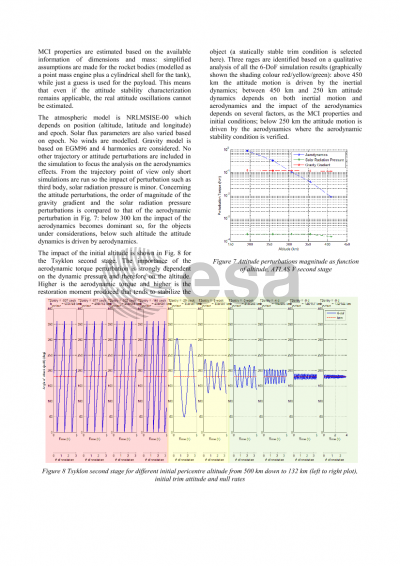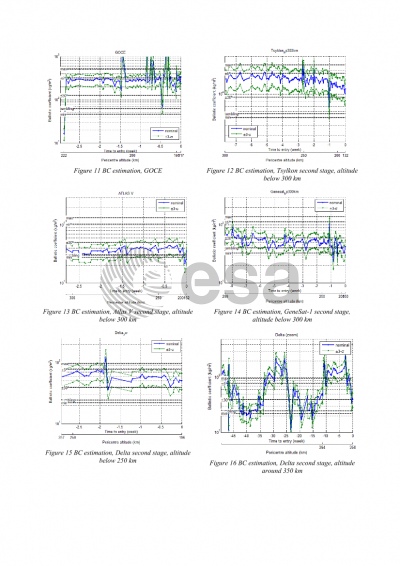Document details

Abstract
In re-entry predictions, drag plays a critical role as it is the main force driving the orbital decay in Low Earth Orbits: is the most significant orbit perturbation that affects the semi-major axis in a secular manner. Other perturbations affect the semi-major axis, but most average out over an orbit cycle due to their periodic character. Estimation of the drag is not easy due to the large uncertainties on the atmospheric properties and drag area. Focusing on the latter, attitude knowledge is critical: it has a direct impact not only on the drag coefficient but also on the effective area where the aerodynamic perturbations are exerting the force. Therefore, attitude knowledge reduces the uncertainty on the estimation of drag which means an improvement in the re-entry time estimation.
The problem of reconstructing the body attitude from TLE is difficult due to the accuracy of TLE information and data availability frequency: only rough estimations of the BC could be obtained from TLE and with this information it is not possible to reconstruct accurately the attitude. However, attitude could be reconstructed when additional information is available, for instance, when optical measurements are available or when additional assumptions could be made (e.g. stable attitude behavior). In this frame, GOCE attitude behavior presents the ideal case where very small variability in the yaw and pitch angles is observed in the last weeks before entry.
In the frame of Bench-marking Reentry Predictions ESA study, we analyze space objects that present similarities with GOCE in terms of aerodynamic stability and geometry (e.g. elongated bodies). A preliminary analysis of the critical parameters and ranges that guarantee a stable flight at high altitude is done based on Flying Quality analysis for simple shape objects (e.g. cylinder and box). These results are then used as a filter applied to DISCOS database to select 5 objects among the known debris including both rocket bodies and payloads that re-entered in the past. For such objects, 3-dof and 6-dof simulations and TLE analysis are combined to characterize the attitude during the orbital decay. GOCE is used to benchmark the approach followed. Preliminary results, confirm that 2 of the 3 rocket bodies analyzed follow a very stable attitude in the last weeks before entry.
Preview









